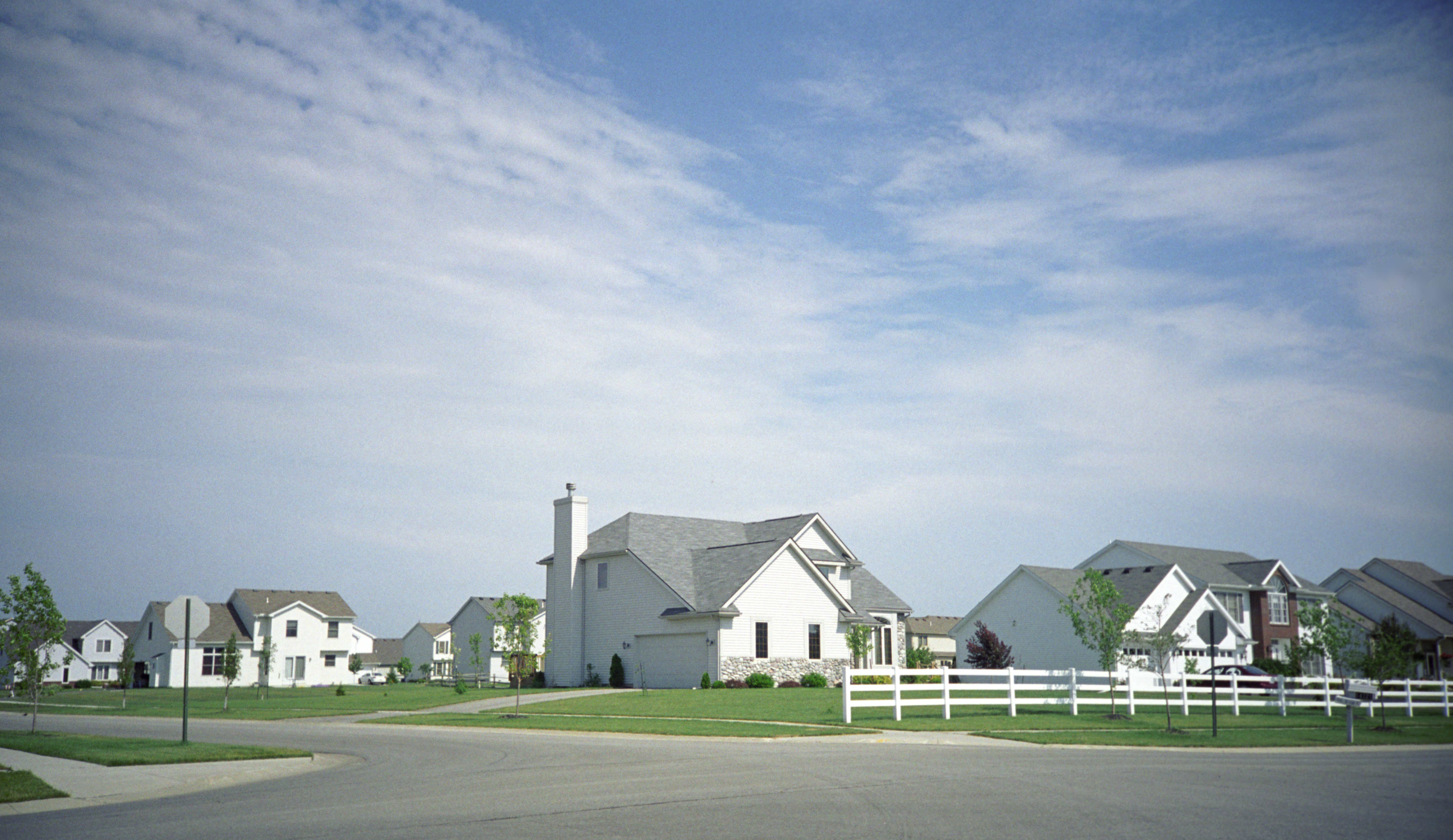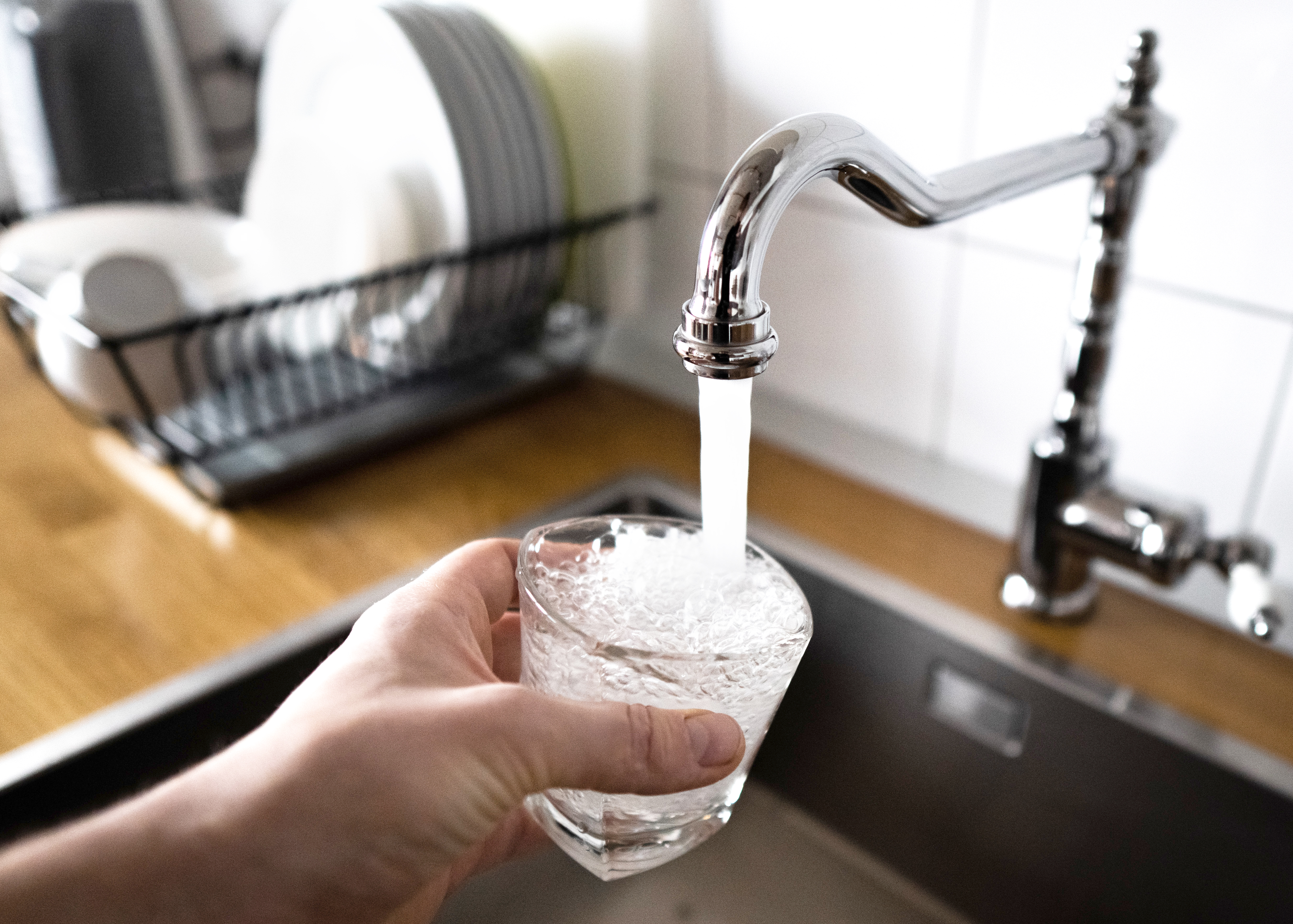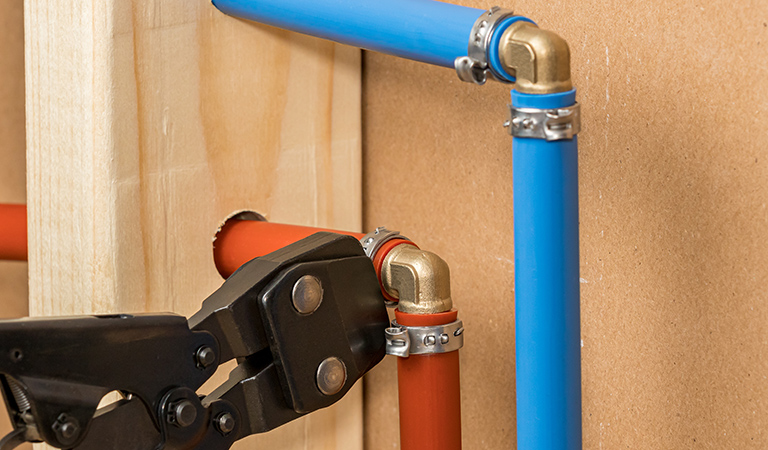
Discover the leading factors affecting your main water line replacement cost in Columbus, including length, material selection, and installation details.
You’ll always have the advantage over your plumbing with these terms in your back pocket


Plumbing terms like FIP and MIP specify the type of thread and fitting on pipes.
Other important plumbing acronyms include FGH, MGH, FCM, and NPT.
You can take a few steps to determine the type and dimensions of preexisting pipe fittings in your home.
Tools like a pitch gauge allow you to measure the exact distance between the crests and roots of a thread.
If you’re attempting to DIY a plumbing project or are just trying to brush up on your plumbing knowledge for future repairs, there are a handful of important acronyms to know. “FIP” is one of the most common acronyms used in plumbing, and understanding its meaning will help you make the right call in a number of ways, from finding the source of your issue to knowing what’s required to fix it. This guide answers the question of what FIP means in plumbing, as well as other common plumbing terms you may not be familiar with.
Plumbing acronyms like FIP indicate the type of fitting end on pipes and hoses. Having terms like these memorized will make it easier to identify problem points and correct them accordingly. For example, if you know the difference between a FIP and a MIP, you’ll be able to tell which goes into which without even having to look it up. And being able to make these kinds of calls without hiring a plumber for every issue will help you save money for bigger projects, such as the cost to repipe a house.

FIP stands for female iron pipe. This type of fitting is characterized by inside threading and is sometimes referred to as FPT (female pipe thread) because it can be made from materials other than iron.
Threads are the ridges found in or outside a pipe fitting that allow you to attach them to another pipe. Threads have peaks and valleys called crests and roots and an area in between the two called a flank. You can always find the threading on FIPs inside the fitting.
FIPs are designed to attach to pipe and hose fittings with outside threading, like MIPs (male iron pipes). Like FIPs, MIPs are sometimes called MPTs (male pipe thread) because they’re not made exclusively from iron. MIPs are designed to be placed into FIPs. Many licensed plumbers will also secure the MIP threads with plumber’s tape before inserting into a FIP to fill in the gaps between crests and roots and prevent leaks.
These kinds of pipe fittings are commonly used to connect gas lines to appliances like dryers, heaters, and washing machines. For this reason, using the appropriate-size FIP or MIP is essential to preventing potential hazards like gas leaks.

Though FIP and MIP are among the most important plumbing terms to know, the following terms are also essential to have in your repertoire.

FGH stands for female garden hose, and this fitting has threading on the inside, much like FIPs. If you have a garden hose in your backyard, you’re probably already familiar with what this looks like, even if you don’t know the professional terminology.
This fitting is typically located on a wall or sink and will look like a faucet when nothing is attached. And, despite the name, it isn’t found exclusively on garden hoses but also in appliances like dishwashers and washing machines.
MGH stands for male garden hose and is characterized by outside threading like MIPs. This fitting is designed to be placed into a female garden hose to channel water into the appropriate appliance, like a dishwasher.
FCM stands for female compression, and you can use this term to describe any type of compression fitting with threading on the inside. Compression fittings connect a series of pipes to secure and create a plumbing network. Unlike the pipe fittings mentioned previously, these aren’t as easy to identify because they can have many different appearances. For example, compression elbow fittings bend at a right angle, while compression T fittings are shaped in the letter T.
NPT and NPS both describe the thread types that are most common in North America. NPT stands for national pipe tapered thread, and NPS stands for national pipe straight. The main difference is that NPTs have tapered threads (meaning the inward angle forms a cone shape), while the threads on an NPS will always be completely straight. An NPT’s unique tapering allows it to be installed without additional materials like plumber’s tape or O-rings, two elements that an NPS will require.
UNS stands for unified special thread and is the standard fitting for screws, nuts, and bolts in North America. Although they are tapered like NPTs, the two fittings cannot be interchanged. Other fittings in the unified thread series include UNF (unified fine pitch threads), UNEF (unified extra fine pitch threads), and UNC (unified coarse pitch threads).

Now that you know the difference between common pipe fittings and threading, find out exactly how to pick the right option for your needs.
Asking yourself this question is essential because of variations in pipe threading worldwide. Though North American appliances and pipes use NPT and NPS threading almost exclusively, an imported machine (like an espresso maker from Italy) is more likely to have BSP (British standard pipe) threading.
BSP threading cannot be attached to NPT or NPS threading because of differences in size and spacing of peaks and valleys. So, if you’re dealing with a situation like this, you may have to request changes from the manufacturer or look into purchasing the appropriate fittings and rehauling your plumbing system before proceeding. If not, you can move on to the next step.
Determining whether you need a male or female fitting is easy to do. Start by observing the threading on your preexisting piping. It’s female if the threads are on the inside and male if they’re on the outside. All you need to do from there is purchase the corresponding fitting.
Tapered threads will taper inward to form a cone shape as they move downwards. Straight threads will not taper at all and will be parallel to the centerline of your pipe. If you can’t determine which is which from a close look, use a caliper to measure the diameter from the top to the bottom of the thread. Diameters that increase on male fittings and increase on female fittings are tapered, but they’re straight threads if the diameters remain the same.
The last two pieces of information you need to gather are thread size and nominal diameter. If you’re working with tapered threads, measure the fourth or fifth full thread with a caliper. On straight threading, measuring any thread will work. Then, use a pitch gauge to compare the thread to each form until you find a match. Finally, look for these specifications in a thread identification guide to find exactly what you’re working with. If you’d rather not go through all this trouble, hire a plumber near you to get it done quickly.
If you want to pay the most exorbitant prices possible for your job, this is the company for you. “By the job” pricing is a rip-off, at least how these people use it. Every job is plugged into a category and prices are set by category. You might have a job that takes half an hour or one that...
Matt is a consummate professional. The work turned out to be far more difficult than expected and rather than turn the job down, Matt rose to the occasion and completed a near impossible task. I can not recommend Greene's Plumbing Service more highly. On a scale of 1-5 I would give Matt a...
I had Ace Fireplace Services install custom chimney caps for my home, and the results are stunning. They fit like a glove and have added a touch of sophistication to my chimney. I can't recommend their services enough.
Very professional and efficient with work. Answered each question I had with great knowledge and an informative response. Will be working with them again.
Window Depot did an amazing job on my deck. I wasnt sure what I wanted to do, but their composite decking was affordable and will last a long time. I am excited to have family over, and I am no longer embarrassed by my backyard. Jeff and the ground crew were polite, respectful, and caring for...
We used Unique Hardwood Floor LLC three years ago to work on the floors of a 70 year old home that needed a great deal of work. Some floors needed repairs, some were replaced and others just needed to be refinished. It was a complicated job as they needed to blend the old and the new to...
Involved an extensive bathroom remodel, including removing tub & installing walk in shower, new drywall, custome tile work to ceiling, plumbing, etc. Overall, job was done on time and on budget. Nick & his team were very professional and had high attention to detail. Quality was great. Highly...
From average costs to expert advice, get all the answers you need to get your job done.

Discover the leading factors affecting your main water line replacement cost in Columbus, including length, material selection, and installation details.

Learn about main water line repair costs in Columbus and what affects pricing to be prepared before you start getting estimates.

Learn how much plumbers cost in Columbus, Ohio. Discover pricing for faucet repairs, pipe work, and emergency services, plus how you can save money.

If the temperatures plummet below 20 degrees, you should pay attention to your home’s pipes. Learn what to do if pipes freeze, and how to prevent them from bursting.

Discover the average plumbing stack replacement cost, key price factors, and expert tips to help you budget for your home’s plumbing upgrade.

Finding frozen pipes involves using all of your senses to listen for, smell, and see the signs. Keep reading to learn how to find frozen pipes in your home.